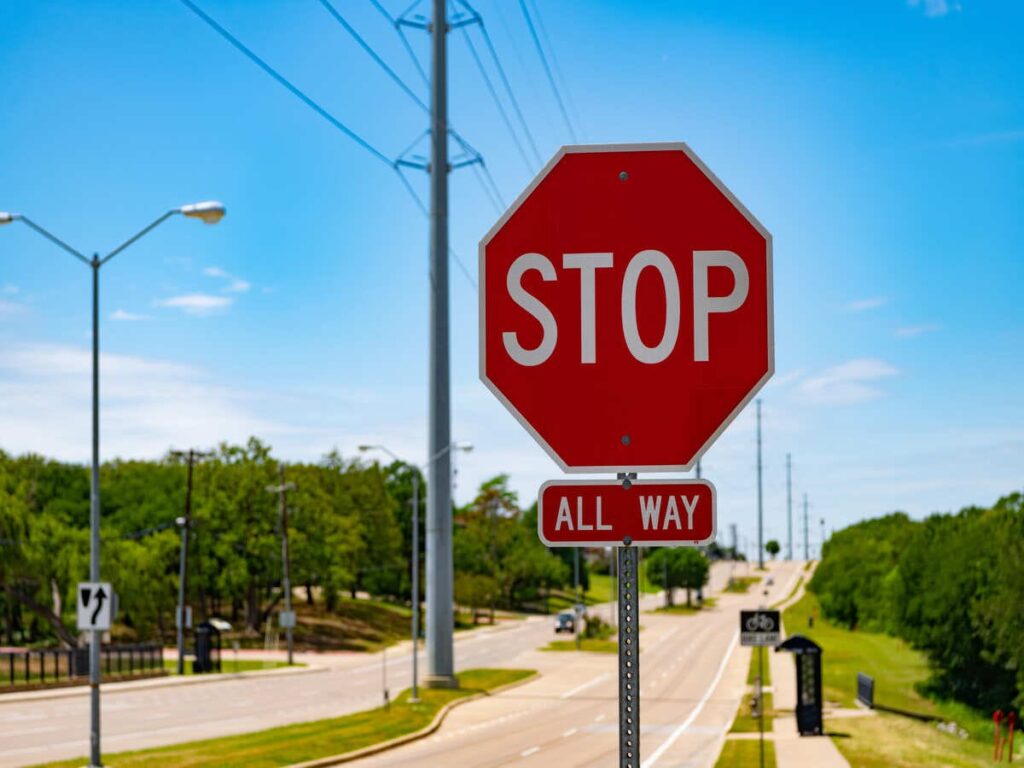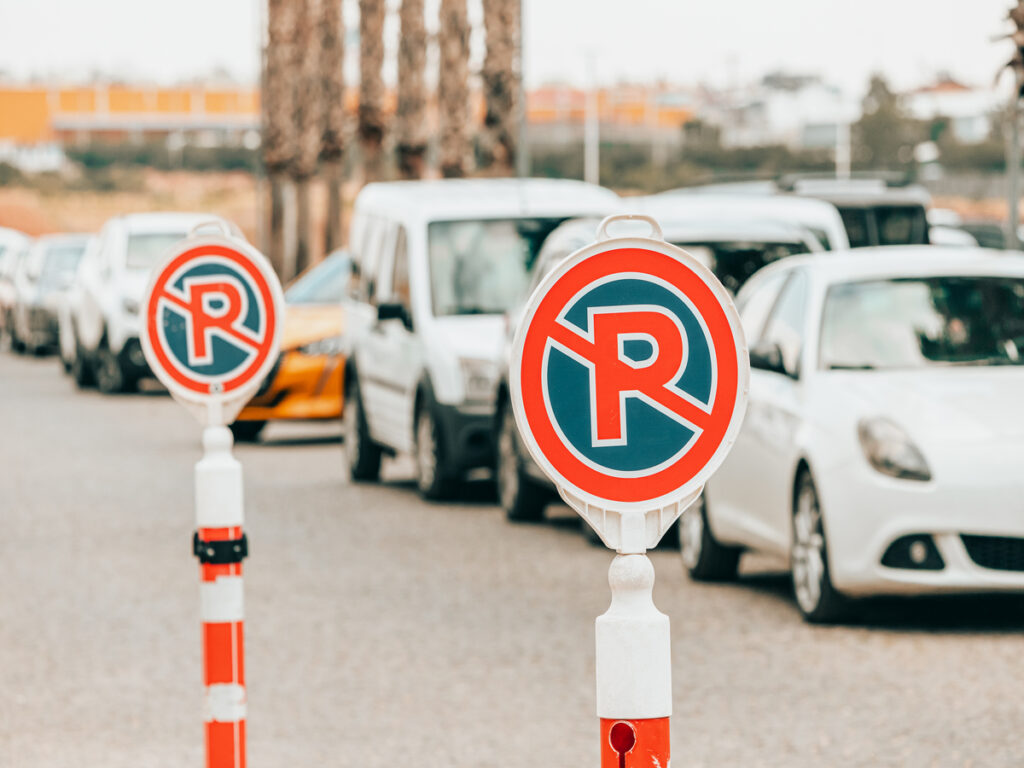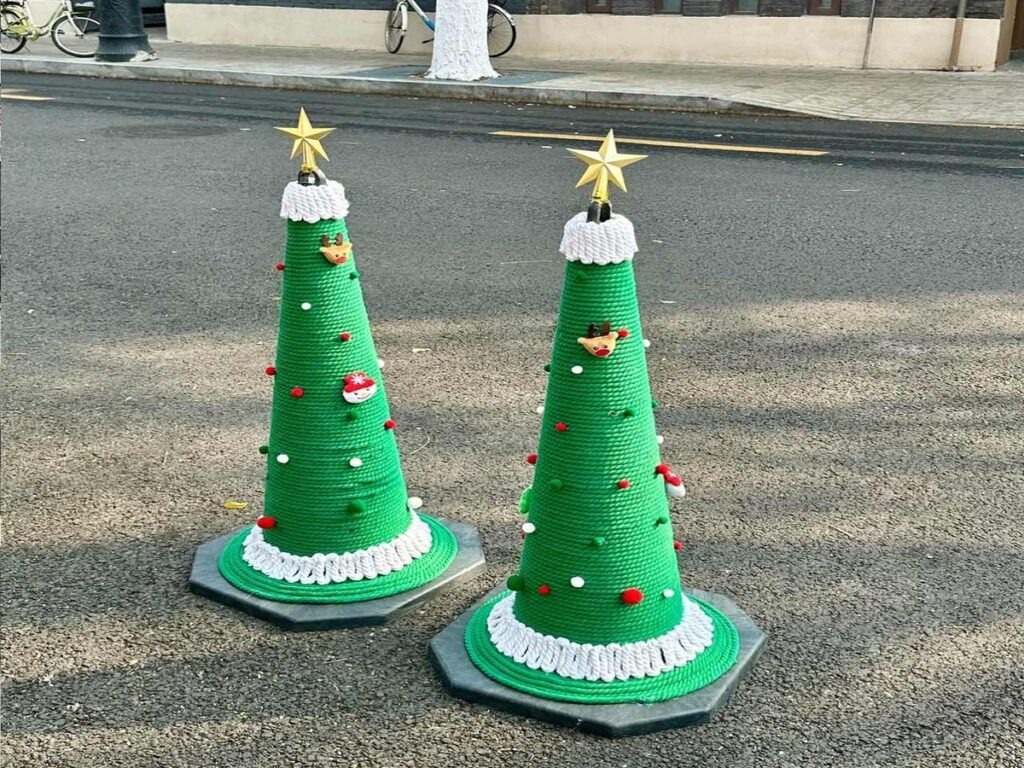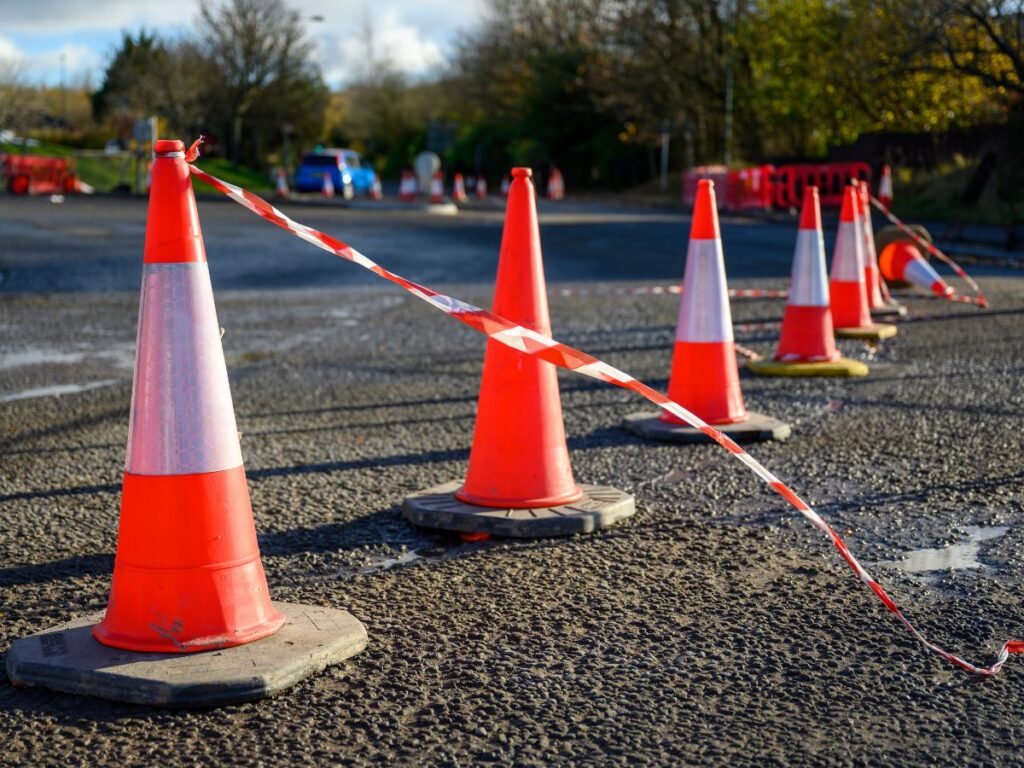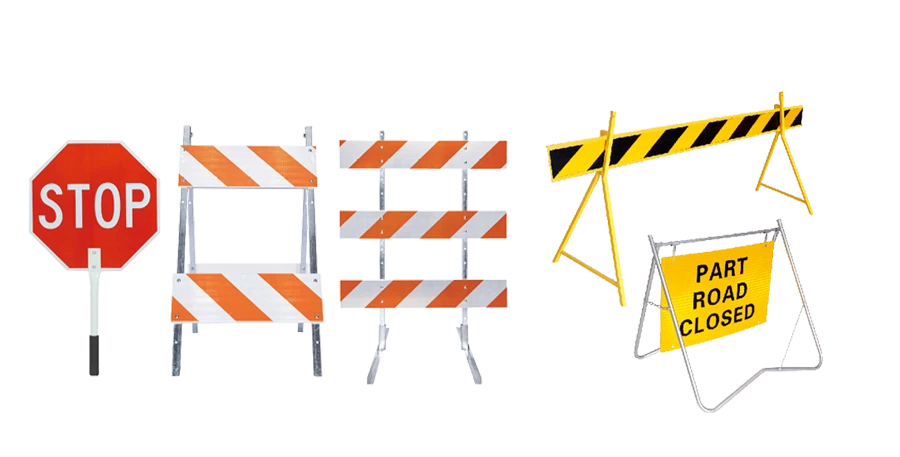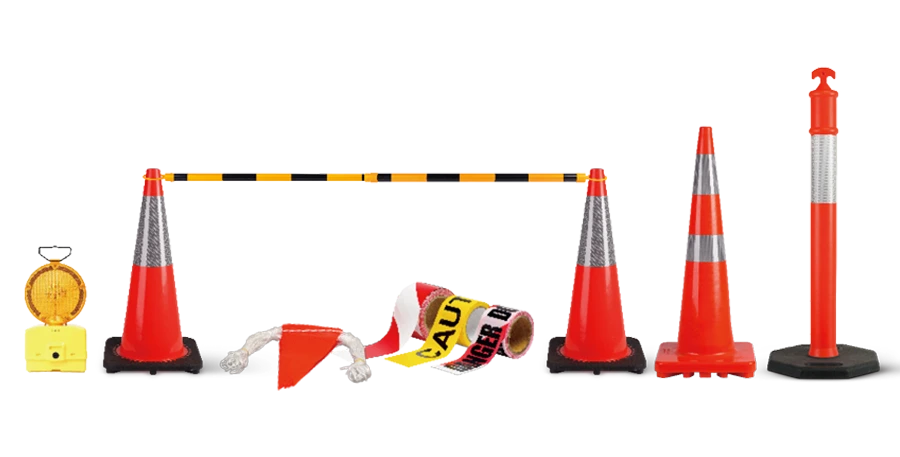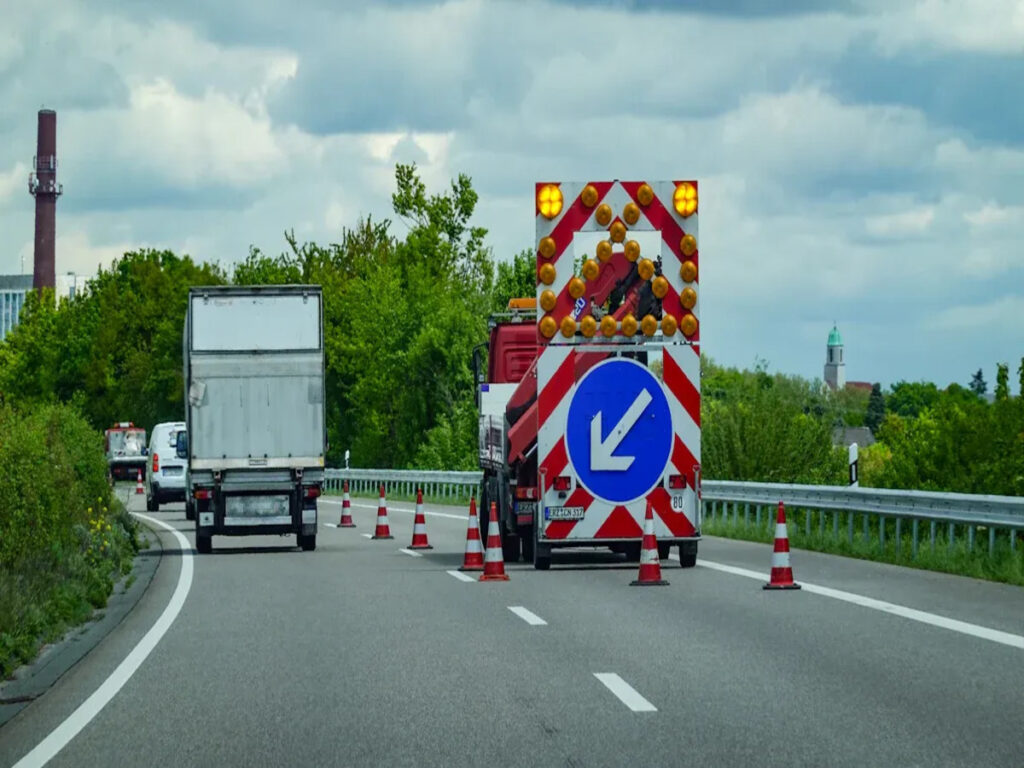
Barrierekegel sind wichtig, um die Arbeitszonen sicher zu halten. Sie sehen diese Zapfen während der Fahrt, vor allem in der Nähe von Bau- oder geschlossenen Gassen. Ihre leuchtenden Farben und glänzenden Oberflächen machen sie leicht zu sehen, sogar nachts. In 2022, über 891 Menschen starben bei Unfallzonenunfällen, und Abstürze, die verursacht wurden 42,000 Verletzungen. Das Einlegen von Barrierenzapfen an den richtigen Stellen hilft dabei, Unfälle zu stoppen und Leben zu retten. Auftragnehmer in 2022 Said, mehr Sicherheitsbarrieren wie Barrierekegel, könnten Verletzungen und Todesfälle viel senken.
Bei OPTRAFFIC, Wir liefern Hochvissibilitätsbarrierkegel, die für maximale Haltbarkeit gebaut wurden, Tag- und Nachtsichtbarkeit, und schnelle Bereitstellung. Vertrauen von Auftragnehmern in ganz Australien, Optraffic -Verkehrssicherheitszapfen Helfen.
Key Takeaways
- Verkehrskegel machen die Arbeitszonen sicherer, indem sie die Fahrer klar anführen. Das richtige Platzieren von Zapfen kann dazu beitragen, Unfälle stark zu reduzieren.
- Müde zu sein ist ein großes Problem für Lkw -Fahrer. Genug Schlaf zu bekommen kann die durch Erschöpfung verursachten Unfälle stoppen.
- Intelligente Zapfen mit Sensoren geben Live -Updates über Gefahren vor uns. Dies hilft den Fahrern, in schwierigen Situationen sicher zu bleiben.
- Es ist wichtig, die richtigen Zapfen für jeden Bereich auszuwählen. Größere Zapfen eignen sich am besten für Autobahnen, und kürzere passen Städte.
- Die Ausbildung von Arbeitnehmern und die Überprüfung von Risiken kann häufig die Sicherheit verbessern. Dies hilft, Unfälle auf der Straße zu vermeiden.
Herausforderungen, denen sich Lastwagenfahrer mit Langstraßen gegenübersehen
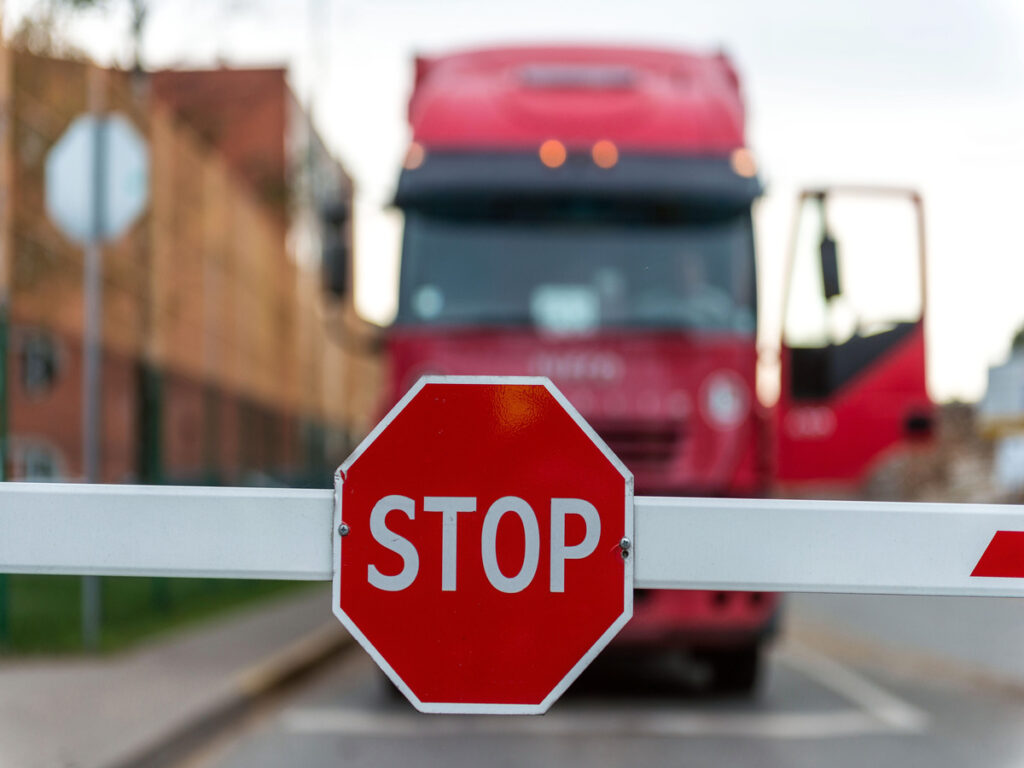
Müdigkeit und lange Stunden unterwegs
LKW -Fahrer verbringen viele Stunden damit, mit wenig Ruhe zu fahren. Es ist ein großes Problem für Trucker, müde zu fühlen. Studien sagen, dass müde Fahrer verursachen 13% von LKW -Unfällen. Um 65% von Truckern geben zu, während er schläfrig zu fahren. Fast die Hälfte ist eingeschlafen, als er mindestens einmal gefahren ist. Viele Fahrer bekommen nicht genug Schlaf, mit 27% sechs Stunden oder weniger pro Tag schlafen. Nicht genug zu schlafen verlangsamt Ihre Reaktionen und Entscheidungen. Dies macht Unfälle wahrscheinlicher.
Navigieren Sie Arbeitszonen und temporäre Verkehrsmuster
Arbeitszonen können für große Lastwagen schwierig sein. Diese Bereiche haben oft schmale Gassen und langsamere Geschwindigkeitsgrenzen. Um 30% von Arbeitszonenunfällen umfassen große Lastwagen. In fünf Jahren, Diese Abstürze sind über 1,000 Todesfälle und 18,000 Verletzungen. Das Ändern von Verkehrsmustern kann Ihre Reise verzögern und Stress hinzufügen. Das sorgfältige Fahren in Arbeitszonen hilft bei der Verhinderung von Unfällen und schützt alle.
Begrenzte Sichtbarkeit und nächtliche Fahrrisiken
Nachts zu fahren ist für Trucker schwer. Dunkelne Lichter und helle Blicke machen es schwer zu sehen. Ein von vier Truckern ist im vergangenen Jahr während der Fahrt eingeschlafen. Eine schlechte Sichtbarkeit macht die Wahrscheinlichkeit wahrscheinlicher, vor allem in Notfällen. Wach bleiben und reflektierende Zapfen verwenden können Sie in dunklen Bereichen führen.
Die Rolle von Verkehrsbarrierenkegeln in der Arbeitszonensicherheit
Helfen Sie den Fahrern zu helfen, in Gebieten mit schlechten Lichtverhältnissen besser zu erkennen
Eindeutig zu sehen ist sehr wichtig für die Sicherheit auf der Straße. Dies gilt insbesondere für Arbeitszonen in der Nacht oder im schwachen Licht. Verkehrskegel mit glänzenden Oberflächen sind im Dunkeln leicht zu erkennen. Ihre leuchtenden Farben und reflektierenden Teile helfen, Autos sicher durch gefährliche Stellen zu führen.
Arbeitszonen mit Zapfen und hellen Lichtern haben weniger Abstürze. Studien zeigen, dass LED -Ampel -Schnittunfälle im Vergleich zu Zonen ohne sie um die Hälfte umgehen. Diese Lichter machen es einfacher, sicher zu sehen und zu fahren, Auch unter schwierigen Bedingungen.
| Evidenztyp | Beschreibung |
|---|---|
| Wie tragbare Lichter helfen | LED -Ampeln machen die Fahrer der Umgebung bewussterer. |
| Weniger Unfälle | Zonen mit diesen Lichtern haben 50% weniger Abstürze als andere. |
| Bessere Sichtbarkeit | LED -Leuchten stellen sicher, dass Signale klar sind, Auch bei schwacher Licht. |
Reflektierende Zapfen und helle Lichter machen dunkle Bereiche sicherer. Sie senken Risiken und halten Fahrer und andere sicher auf der Straße.
Autos durch vorübergehende Fahrspurveränderungen führen
Temporäre Fahrspuränderungen können verwirrend sein, vor allem in Bauzonen. Verkehrskegel helfen, indem es den richtigen Weg zeigt, um zu gehen. Sie werden sorgfältig platziert, um den Verkehr in Bewegung zu halten und Unfälle zu vermeiden.
In geschäftigen Stadtgebieten, Zapfen helfen, den Verkehr zu verwalten und Fußgänger sicher zu halten. Auf Autobahnen, Sie sind stark und leicht zu sehen, Fahrer Frühwarnungen geben. Während der Versorgungsarbeit oder Notfälle, Zapfen werden schnell so eingerichtet, dass sie Gefahrenzonen markieren und den Verkehr leiten.
| Szenario | Wie Zapfen helfen |
|---|---|
| Stadtbaugebiete | Helfen bei der Kontrolle des Verkehrs, sichere Wege erstellen, und Unfälle reduzieren. |
| Autobahnreparaturen | Stark und hell, Sie warnen die Fahrer frühzeitig und führen sie sicher. |
| Notfälle und Versorgungsarbeiten | Schnell platziert, um Gefahren zu markieren und Autos sicher zu leiten. |
Verkehrskegel erleichtern schwierige Situationen leichter zu handhaben. Sie helfen den Fahrern, sich sicher zu fühlen, wenn sich plötzlich Straßen verändern.
Raststopps für Fahrer sicherer machen
Raststopps sind für Lkw -Fahrer wichtig, um Pausen einzulegen. Aber sie können überfüllt und stressig sein mit vielen Autos und wenig Platz. Verkehrskegel helfen dabei, diese Bereiche zu organisieren und Unfälle zu verhindern.
Kegelmarkparkplätze, Eingänge, und Wanderwege, um die Dinge sicher zu halten. Ihre glänzenden Oberflächen machen sie leicht zu sehen, Auch an geschäftigen oder dunklen Orten. Ordnungsgemäß platzierte Zapfen führen Autos und stoppen Abstürze, Raststopps sicherer machen.
Raststopps mit Zapfen und andere Sicherheitsinstrumente sind organisierter. Sie schützen die Fahrer und stellen sicher, dass die Sicherheit nicht nur für Autobahnen, sondern überall ist.
Smart Barrier Cone Solutions für moderne Sicherheitsbedürfnisse

Intelligente Zapfen mit Sensoren für Warnungen
Intelligente Zapfen verwenden Sensoren und IoT, um die Verkehrssicherheit zu verbessern. Sie senden Echtzeit-Updates an Fahrer über Gefahren oder Verlangsamungen. Dies hilft den Fahrern, Risiken zu vermeiden und den Verkehr reibungslos in Bewegung zu halten.
Diese Zapfen sind in dunklen Bereichen leicht zu sehen. Ihre LED -Leuchten und reflektierenden Oberflächen führen Autos sicher durch überfüllte Zonen. Sie senken auch die Wahrscheinlichkeit von Unfällen bei nächtlichen Bauarbeiten. Notfallteams nutzen diese Zapfen, um schnell Probleme zu finden und schnell zu handeln. Dies macht Straßen für alle sicherer.
Daten sammeln, um den Verkehr zu verbessern
Intelligente Zapfen tun mehr als Autos; Sie sammeln Daten. Sensoren verfolgen den Verkehr und das Fahrerverhalten, um die Sicherheit zu verbessern. Diese Daten tragen dazu bei, Verkehrssignale anzupassen und Verzögerungen zu verringern.
Intelligente Zapfen schlagen neue Routen vor, wenn die Straßen überfüllt sind. Dies reduziert Staus und macht das Fahren sicherer. Sie funktionieren gut mit aktuellen Verkehrssystemen, Fahrern und Straßen helfen, besser zu kommunizieren.
- Zu den Vorteilen von intelligenten Zapfen gehören:
- Verfolgung des Verkehrs mit IoT -Sensoren.
- Geben Sie den Fahrern Live -Updates für sicherere Entscheidungen.
- Überfüllte Bereiche mit hellen Lichtern sicherer machen.
- Notfallteams schneller reagieren.
- Senkung der Risiken in dunklen Bereichen mit reflektierenden Materialien.
Erfüllung von FMCSA- und DOT -Sicherheitsregeln
Intelligente Zapfen treffen sich FMCSA Und PUNKT Sicherheitsregeln. Sie sind leicht und faltbar, sie leicht einrichten machen. Dies reduziert die Verkehrsverzögerungen, während die Sicherheit hoch bleibt.
Diese Zapfen bestehen aus starken Materialien, die lange dauern. Sie können mit schlechtem Wetter und schwerem Gebrauch umgehen, ohne zu brechen. Neue Smart Cone Designs setzen höhere Sicherheitsstandards für die Branche fest.
| Evidenztyp | Beschreibung |
|---|---|
| Bessere Sichtbarkeit | Helle Kegel helfen Fahrern und Arbeitern, sicher zu bleiben. |
| Einfache Setup | Leichte Zapfen sind schnell zu platzieren, Verzögerungen reduzieren. |
| Sicherheitsvorschriften | Intelligente Zapfen befolgen die Sicherheitsregeln, um die Öffentlichkeit zu schützen. |
| Kosteneinsparungen | Langlebige Zapfen sparen Geld und bleiben zuverlässig. |
| Verbesserungen der Branche | Neue Designs schaffen bessere Sicherheitsprodukte für alle. |
Die Verwendung intelligenter Zapfen macht Straßen sicherer und erfüllt die Sicherheitsregeln. Diese Kegel schützen die Treiber, Arbeiter, und Fußgänger, während sie Bauzonen effizient halten.
Zusammenarbeit für sicherere Straßen: Auftragnehmer, Lieferanten, und Flottenmanager
Wählen Sie die besten Verkehrskegel für verschiedene Straßen
Wenn Sie die richtigen Zapfen auswählen, ist die Straßen für alle sicherer. Unterschiedliche Straßen benötigen Zapfen mit spezifischen Merkmalen für eine bessere Sicherheit. Autobahnen mit schnellen Autos brauchen größere Kegel, Wie 36-Zoll. In Städten, Kürzere Zapfen, wie 28-Zoll, gut arbeiten. Windige oder geschäftige Bereiche brauchen Zapfen mit schweren Basen, um aufrecht zu bleiben. Leichtere Zapfen sind in Ordnung für ruhige Orte.
Reflexionskragen eignen sich hervorragend für die Nacht, während hellorange Zapfen während des Tages helfen. Überprüfen Sie immer, ob Zapfen lokale Regeln befolgen, wie MUTCD -Standards. Der Kauf von Zapfen in Großteil kann Geld für große Projekte sparen.
| Kriterien | Details |
|---|---|
| Arbeitsumgebung | Größere Kegel für Autobahnen; Kürzere für Städte oder Tiefflächenbereiche. |
| Stabilitätsbedürfnisse | Schwere Grundlagen für windige Flecken; leichtere Kegel für ruhige Zonen. |
| Sichtbarkeitsanforderungen | Reflexionskragen für die Nacht; Helles Orange für Tag. |
| Menge und Budget | Massenbestellungen sparen Geld; Wählen Sie Zapfen basierend auf der Projektgröße. |
| Einhaltung | Stellen Sie sicher, dass Zapfen lokale Sicherheitsregeln wie MUTCD erfüllen. |
Die Verwendung der richtigen Zapfen senkt das Risiko und hält den Verkehr sicher in Bewegung.
Aufbau einer Sicherheit zuerst mit Schulungen und Werkzeugen
Die Sicherheit beginnt mit gutem Training und mit den richtigen Werkzeugen. Praktische Schulungen mit Beispielen im wirklichen Leben hilft den Arbeitnehmern, Sicherheitsschritte zu lernen. Das Überprüfen auf Risiken hilft oft dabei, Probleme zu finden und sie schnell zu beheben. Zum Beispiel, Das Unterrichten von Fahrern, die Sicherheitsausrüstung ordnungsgemäß zu tragen, kann Verletzungen verhindern.
Training für Notfälle, Wie Unfälle, bereitet die Arbeiter vor, schnell zu handeln. Das Erlernen neuer Sicherheitsregeln hält alle auf dem neuesten Stand. Mit an ein Umwelt, Gesundheit, und Sicherheit (EHS) system helps manage risks and follow safety laws.
- Tips for better safety:
- Make training fun and easy to understand.
- Check for risks regularly.
- Teach proper use of safety gear.
- Train for emergencies like accidents.
- Keep learning to stay ready for new challenges.
Indem Sie sich auf die Sicherheit konzentrieren, everyone can work together to stay safe.
Spotting Dangerous Areas and Fixing Problems
Finding dangerous spots is key to stopping accidents. GPS and tracking tools show where drivers face risks. Zum Beispiel, sudden braking or speeding can point to unsafe areas. Using this info, you can add cones or lower speed limits to make roads safer.
Studies also help by showing how bad roads affect safety. Dangerous areas often have heavy traffic, scharfe Kurven, or poor lighting. Fixing these with better signs, Lichter, or lane changes can cut down accidents.
Teamwork between contractors, Lieferanten, Und Flottenmanager machen dies einfacher. Klare Sicherheitsziele festlegen, bessere Routen planen, und mit Live -Updates alle Hilfe verwenden. Das Beobachten von Fahrerorten und -aktionen sorgt für schnelle Hilfe in Notfällen.
Indem Sie sich auf riskante Flecken konzentrieren und intelligente Lösungen verwenden, Straßen können für alle sicherer sein.
Verkehrssicherheitszapfen sind wichtig, um Straßen für alle sicherer zu machen. Das richtige Platzieren senkt die Gefahren und hilft den Fahrern, besser zu sehen. Diese Zapfen leiten den Verkehr und halten die Fahrer sicher, Besonders in Arbeitszonen. Die Verwendung von Sicherheitszapfen, die Sicherheitsregeln befolgen.
Zusammenarbeit mit Auftragnehmern, Lieferanten, und Flottenmanager verbessert die Verkehrssicherheit. Teamwork schafft sicherere Straßen für Lkw -Fahrer und alle Reisenden.
FAQ
Warum sind Verkehrsbarrierenkegel für die Sicherheit gut??
Verkehrskegel sind hell und leicht zu sehen. Ihre glänzenden Teile helfen den Fahrern, sie in jedem Licht zu erkennen. Wenn Sie sie an die richtigen Stellen legen, bewegen sich die Autos sicher in Bewegung. Dies senkt Verwirrung und stoppt Unfälle in Arbeitszonen.
Wie machen intelligente Zapfen Straßen sicherer??
Intelligente Zapfen haben Sensoren und Lichter, um schnelle Warnungen zu geben. Sie verfolgen den Verkehr und wie Fahrer handeln, um Gefahren zu vermeiden. Diese Funktionen erleichtern es einfacher, in riskanten Bereichen sicher zu sehen und zu fahren.
Gibt es verschiedene Zapfen für verschiedene Straßen?
Ja, Zapfen sind für bestimmte Straßen gemacht. Autobahnen brauchen hohe Zapfen mit schweren Böden, um stabil zu bleiben. Städte verwenden kürzere Zapfen. Reflexionsbänder helfen nachts, und leuchtende orangefarbene Zapfen funktionieren bei Tageslicht gut.
Wie können Arbeiter Straßenkegel richtig einsetzen?
Die Arbeiter sollten lernen, wo und wie man Kegel sicher platziert. Überprüfen Sie die Straßenkegel häufig, um sicherzustellen, dass sie nicht kaputt sind. Verwenden Sie immer Zapfen, die Sicherheitsregeln wie MUTCD befolgen, um bessere Ergebnisse zu erzielen.
Warum brauchen Lkw -Fahrer Verkehrskegel??
Verkehrskegel helfen Truckern in Arbeitszonen und Raststopps. Sie machen Straßen sicherer, indem sie klare Wege zeigen und Risiken reduzieren. Richtig platzierte Zapfen helfen den Fahrern dabei, in schwierigen Fahrplätzen sicher zu bleiben.

